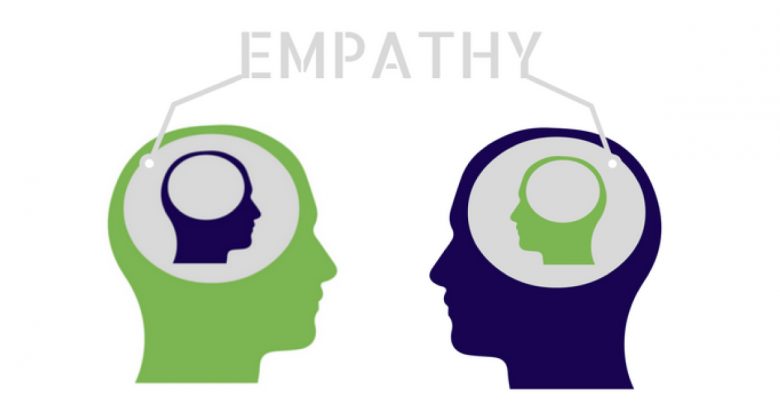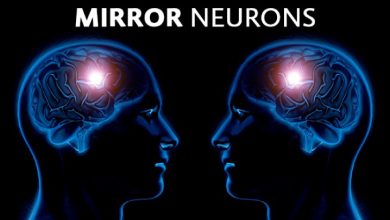What is empathy, and how empathic am I?
How do we define empathy? Where does the word empathy even come from? What are empaths, do they even exist? How can we understand how empathic we already are? Does everyone need to have more empathy, or are there people that already have too much of it? This article aims to give possible answers to these questions, and potentially raise further questions about the topic of empathy and how it applies to us.

Why did I choose this tool? I got quite tired of seeing empathy being stated as the answer to everything, and that everyone needs to have more empathy. While I agree that empathy is essential to understanding, communicating and getting along with each other, I felt that I was already overwhelmed by the amount of empathy that I already have, and emotionally exhausted by being knocked around by the emotions of others and poisoned by any kind of emotionally toxic situations. What I like about this tool is that it addresses the aspect of empathy from both angles: supporting the development of empathy of individuals who find themselves low in empathy, as well as supporting those who have “too much” empathy to manage their empathy in healthy and productive ways.
How does this apply to being a trainer?
Main content:
The English word empathy was coined in 1909, but of course empathy itself has been around ever since the beginning of our existence as humans. Emotions are and have always been an essential part of who we are, like messengers giving us hints of how we should respond to our environment, how we can survive and even thrive. And empathy is the ability to feel the emotions that someone else is feeling.
Our current western idea of empathy comes from two places. In English, the word empathy comes from the Greek root pathos, which means “emotion, feeling, suffering, or pity” (it also comes from a German word, which we will expound on below). The English words empathy and sympathy are used interchangeably to refer to the sharing of emotions or knowledge of emotions, whereas apathy relates to lack of emotions, and antipathy relates to antagonistic emotions. Some sources make a distinction between empathy (the ability to share an emotion viscerally) and sympathy (the ability to understand the emotions of others without actually feeling them yourself), but this distinction isn’t concrete or stable.
Some dictionaries will give the exact opposite meaning for these 2 words. For example, at grammar.yourdictionary.com you’ll find the following definition:
An easy way to stop the confusion between sympathy and empathy is to remember this: sympathy is a feeling you share with another person; empathy is the ability to understand the emotions of another person. To put it another way, it’s a difference between the head (empathy) and the heart (sympathy).
Because of these confusing (and most likely still developing) definitions, this article won’t be focused on differentiating empathy and sympathy. Some researchers have taken the approach of renaming these two seemingly separate categories as affective (viscerally feeling) empathy and cognitive (objectively understanding) empathy. Although these new terms address the sympathy – empathy confusion very nicely, they create a distinction that is problematic. Because the ideal empathic scenario is when your head and your heart are aligned and working together to understand and respond to the feelings of another.
The English word empathy was coined in 1909. It came into our language as a translation of the German word Einfühlung (pronounced EIN-fhoo-loong), which means “in feeling” or “feeling into” and which first appeared in print in German philosopher Robert Vischer’s 1873 PhD dissertation on aesthetics. Vischer used the word to describe both our capacity to enter into a piece of art or literature, to feel the emotions that the artist had intended, and our capacity to imbue a piece of art (or any object) with meaning and emotions.
For the purpose of this article, we will use the definition from the book The Art of Empathy: A Complete Guide to Life’s Most Essential Skill by Karla Mclaren.
Empathy is a social and emotional skill that helps us feel and understand the emotions, circumstances, intentions, thoughts, and needs of others, such that we can offer sensitive, perceptive, and appropriate communication and support.
A definition of empathy wouldn’t be complete without defining what empaths are. Some claim that being an empath is not a real thing, and that it is a product of science fiction movies. While it’s true that you can find exaggerated portrayals of empaths in entertainment (for example in the series Sense 8), empaths do exist and you may even be close to or work with empaths without realizing that they are empaths. The misunderstanding comes from the fact that being an empath and having supernatural or psychic powers are often thought to be linked together, when in reality there is nothing superhuman and everything human about being an empath. We can define an empath as:
An empath is someone who reads emotions, nuances, subtexts, undercurrents, intentions, thoughts, social space, interactions, relational behaviors, body language, and gestural language to a greater degree than is deemed normal.
The best part about this definition is “to a greater degree then is deemed normal”. Unfortunately, we live in a world where awareness of emotions, acceptance of the full range of emotions, education and knowledge about what emotions are and what we should do with them is sorely lacking. This can make an empath seem so strange and out of place, and possibly gave rise to the explanation that they are supernatural or incredibly different from the normal human being. The truth is everyone has empathy to some degree, and as such, everyone has some of the same traits that an empath has. Almost anyone can recognize sadness when someone is crying and has despondent body language, the only difference between this and being an empath is that possibly the empath can recognize the sadness when it is not being openly displayed. And they may feel the emotions more intensely, for instance when someone is using violent communication (see article on compassionate communication) with them or with others in their presence, they will feel very hurt by this and sometimes even experience physical pain because of it.
In summary, the empath is a normal human being, with normal human emotions and empathy, but who happens to experience their own and others’ emotions “to a greater degree than is deemed normal.” And it is my sincere hope that as we all develop a greater awareness of emotions, and a greater level of empathy, the gap between the “normal person” and the empath will decrease and the empath will feel less out of place in a world that desperately needs their skills.
Regardless of where you are on the empathic scale, whether you are hyper empathic and are always absorbing everyone’s emotions, or whether you are low in empathy and tend to feel uncomfortable and not know what to do in situations where emotions are high, you have work to do. Everyone can develop in their understanding and use of empathy, and become more skilled at creating healthy emotional environments for themselves and others (or “emo-friendly environments” as I like to call it).
But before we get into the development stage, and make the mistake that so many others make of saying “you just need to have more empathy!” let’s take a moment to assess where you actually are on the empathic scale. From this, you will better understand if you need to train yourself to have more empathy (if you find yourself low on the empathic scale) or if you actually need ways to better manage the intense empathy and emotional contagion that you experience (if you find yourself high on the empathic scale). What you decide to develop and how you go about developing it, is up to you, but this self-assessment can give you some more info, about where you are at to help you on your journey.
Your Empathic Inventory
(from “The Art of Empathy”)
If the statement applies to you, write yes.
I tend to know how others are feeling, even if they are trying to hide it.
I tend to avoid conflict because I don’t want to hurt others or make them feel embarrassed.
People (and animals) and their relationships and interactions are endlessly interesting to me.
I do not need to see other’s faces to read their emotions.
I am drawn to situations of injustice, and I spend a lot of time thinking about how to alleviate suffering.
I often mimic the mannerisms, accents, and body language of others without meaning to.
I tend to think about interpersonal issues by imagining myself in the place of those involved.
I have a very easy time reading between the lines, under the surface, and behind the obvious.
I feel beauty palpably; beauty creates a sense of delight and expansiveness in my body.
Interpersonal conflict – even when it does not involve me personally – often feels physically painful to me.
I do not like black-and-white polarization; the truth usually resides somewhere in the middle.
When I make a social blunder, I feel extremely disturbed, and I work hard to make things right again.
I feel the emotions of others viscerally, as if the emotions belong to me.
I can sense and identify multiple simultaneous emotions in myself, in others, and in interactions between duos or groups.
I can sense and identify the relative intensity of multiple emotions in myself, in others, and in interactions between duos or groups.
I consider the needs and feelings of others in decisions I make, often to the point of ignoring my own needs and feelings.
I love to watch interactions, especially when the people or animals are unaware of me.
I enjoy drama, movies, good television shows, and well-told stories.
I love good literature, well-written characters, and well-paced stories.
I love to play with and interact lovingly with people and animals.
I have an easy, natural ability in one or more art forms.
I have a good, and often silly, sense of humor.
I am good with shy people.
I am good with children.
I am good with animals.
In an emergency, I can focus on what’s important and provide assistance.
I often feel tender, protective feelings toward others—even complete strangers.
Art, music, and literature touch me very deeply.
I am very sensitive to foods and tend to respond markedly to dietary changes.
I have an intense capacity to focus on activities that delight and engage me.
When I’m in conflict with others, I tend to talk deeply about it with third parties so that I can sort out the many issues that have led to the conflict.
I love to talk and think about interpersonal issues and social structures.
I have a rich interior life, and I enjoy being alone with my thoughts and ideas.
I often need to get away from the needs of others and recharge my emotional batteries.
I am deeply sensitive to things like sounds, colors, textures, scents, shapes, and spatial relationships between objects.
I am able to stay present (for myself and others) in the face of intense emotions like grief, rage, and despair.
I tend to physically feel the emotions of fear and anxiety of others in my own body, especially when others are unwilling or unable to admit to feeling them.
I enjoy thinking about, searching for, and finding the perfect gift for others.
I regularly feel alongside others; I feel their emotions and I share their concerns.
I tend to approach problems tangibly, using my hands and body as I think about and walk through the issues involved.
I gesture a great deal when I communicate, and my face is often very animated.
With those closest to me, I tend to rely upon gestures and eye contact (rather than words) during conversations.
I am very aware of the personal space of others.
SCORING YOUR ANSWERS
1–20 yes responses: If you answered yes to twenty or fewer of these questions, you can consider yourself to be somewhat low in empathic ability at this moment. However, the reasons for this are different for each person. This score may mean that you’re relatively uninterested in or unaware of the emotions and situations of others. But sometimes, a low score can mean that you’re actually hyper empathic but currently unable to organize your sensitivities and your concern for others in a way that works for you. In hyper empathy, you may experience overwhelm in the presence of emotions or interactions, and you may shut down as a protective response. In either case, there are ways you can improve. If you’re insensitive to emotions and interactions, you can become more aware of and skillful with them; and if you’re overwhelmed by emotions and interactions, you can learn to organize and address your sensitivities so that you can live more comfortably in the social world.
21–32 yes responses: This midrange of yes responses may place you in that just right empathic sweet spot I mentioned—where your empathic abilities are neither too cold nor too hot. However, there may be areas where you need some support in increasing or decreasing specific sensitivities. We want this sweet spot to be comfortable, so that you can be a healthy and happy empathic presence in a world that needs you!
33–44 yes responses: This number of yes responses places you in the high empathy category, which can lead you into hyper empathy if you haven’t yet learned to create effective boundaries, work gracefully with emotions, and use self-regulation skills when you’re overwhelmed. As it is with any talent or tendency, high levels of ability can be a double-edged sword. Although it can be very easy for you to empathize, the steps involved in healthy empathizing may be hidden from you because you didn’t really ever learn how to do it.
Thank you for embarking upon this empathic journey, and thank you for being willing to bring your emotional awareness and your healthy empathy to a waiting world.
Reflection questions:
How do I feel about the result I got of where I am on the empathic scale?
What steps will I take to increase my level of empathy (if I found myself on the low end), or to better manage the empathy I have (if I found myself on the high end)?
What are some ways in which empathy is currently influencing my work as a trainer?
What are some ways in which empathy is currently influencing my life as a whole?
What benefits will I see when I become more empathetic/become better at managing my empathy?
Exercises:
How to apply it in everyday life:
The beauty of empathy and empathic responses is that you’re continually getting feedback, from yourself or from others, on how you use empathy and its results. A lack of empathy can result in a huge argument with your significant other, while displaying empathy and responding appropriately to emotions in a training can have a profound positive effect on a participant and it is very likely that they will express that to you. When you want to improve in the area of empathy, you have tons of resources already within yourself and your environment. You feel something, and do something about it (or don’t), and then you can easily observe the results. How did that make me feel? How did that make the others feel? If I faced this situation again, what would I do differently? What aspects do I think I handled amazingly well?
You can even keep an empathy journal, to record how you feel, what you do about it, and what the results are, so that you can actually track when things improve and when you notice that there are things that you want to change.





